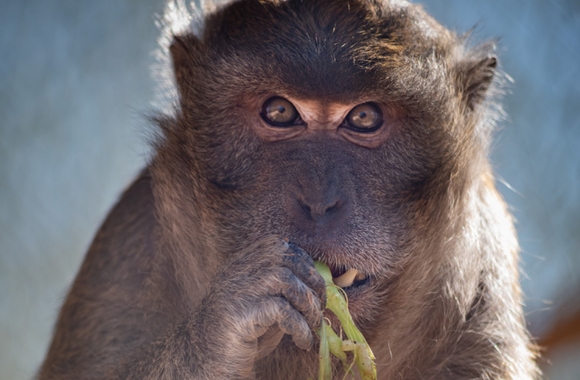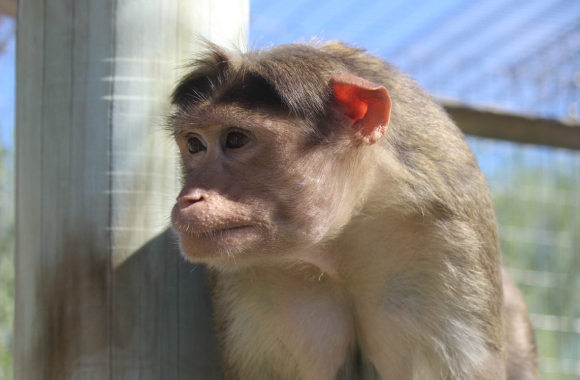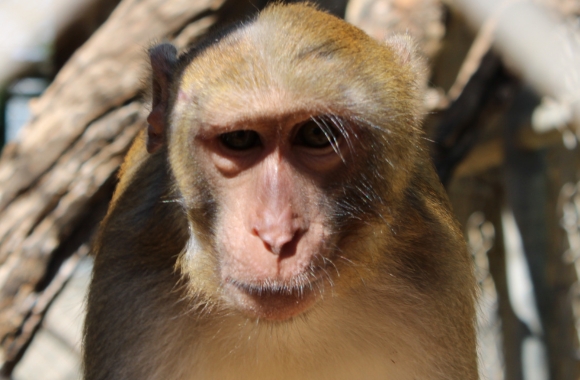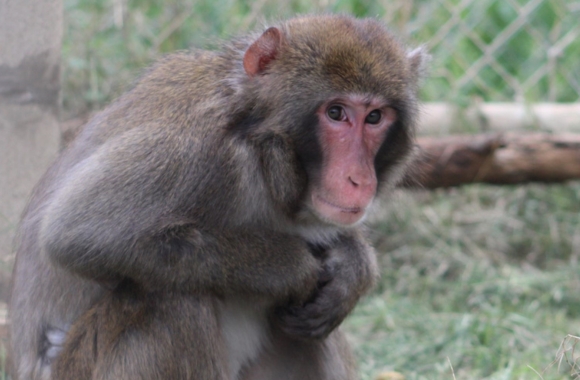Although often characterized as gregarious “pests” in their range territories around the world, macaques represent some of the most complex, unique, social, and diverse monkeys on the planet, and deserve some long overdue love and appreciation as we celebrate International Macaque Week.
Macaques are just as numerous as they are fascinating; the International Union for Conservation of Nature (IUCN) currently recognizes 24 species of macaques. Unfortunately, most macaque species demonstrate decreasing population trends, and many of them are threatened by extinction; nine macaque species are classified as Endangered, eight are classified as Vulnerable, and two are classified as Critically Endangered in need of urgent protection (the Celebes crested macaque of Sulawesi near Borneo and the Pagai Island macaque of the Mentawai Islands near Sumatra).
Macaques Are Widely Dispersed
Macaques demonstrate the greatest geographical distribution of any non-human primate; all macaques are native to Asia with habitats spanning much of the massive continent, aside from Barbary macaques, who are native to North Africa (and have a human-introduced population in Gibraltar). The Barbary macaque population in Gibraltar is the only wild monkey population on the European continent, perhaps initially imported by humans for the pet trade several centuries ago.
Macaque Species Share Many Similarities, but Also Have Unique Attributes
Many similarities are shared across macaque species, including male-dominated troops with a clear but shifting dominance rank order, mostly inherited female rank order, omnivorous diet, the possession of handy cheek pouches to store extra food, affinity for climbing, and a high intelligence level. With their massive geographical range, we also see enormous differences between species, as reflected by differing troop sizes, social dynamics, and forms of communication, like using different alarm calls to alert troop members to the presence of predators.
For example, long-tailed (or crab-eating) macaques are native to Southeast Asia and have grey/brown faces that have long, distinguished white/grey mustaches and beards once they reach maturity. They inhabit forests along rivers, where they eat fruit and fish for crabs and other crustaceans and have been observed to jump into water as a way to escape predators.
Japanese macaques, or snow monkeys, are larger and more muscular, with bright pink faces, green/hazel eyes, and very short furry tails. They have been observed to “wash” their food, like sweet potatoes, in salty sea water before consuming. This behavior became the first strong evidence of cultural behavior in nonhuman animals, first observed in 1953 on the Koshima Islet, Japan. Like many primate species, snow monkeys are important figures in myths and folktales and are seen in representations of the Buddhist adage “See no evil, hear no evil, speak no evil.”
Macaques Are Highly Adaptive
Due to the harsh terrain and high rate of urbanization in their natural habitats, macaques have become known as one of the most adaptive non-human primates; often so adaptive that they meet friction in areas of human-monkey overlap, as emphasized by instances of crop foraging and aggression towards tourists (mostly seen in areas in which their natural food resources have become scarce, and places that promote interactions like photo ops and feeding experiences with these territorial and naturally rambunctious animals). These conflicts, along with the ongoing threats of the pet trade, habitat destruction, and the use of macaques in biomedical research, all contribute to the rapidly increasing decline of wild populations of macaques.
Meet Some Macaques at Our Primate Sanctuary!
Born Free USA’s primate sanctuary in south Texas is home to six macaque species – Japanese macaques, bonnet macaques, rhesus macaques, pig-tailed macaques, long-tailed macaques, and stump-tailed macaques.
Scroll below to meet four special macaque residents!
Freeman – Long tailed macaque
Freeman was formally kept as a “pet” in some of the most deplorable conditions that our team has ever seen. Living in a filthy dog crate for ten years, Freeman was forced to ingest alcohol and marijuana, while sitting in inches of feces as his cage was never cleaned. Rescued in 2012 and brought to our sanctuary, Freeman is now well-adjusted and lives with his best friend, Sissy. He spends his days in quiet company, grooming with his friend, as well as keeping a close eye on the other monkeys who live nearby. Fearless, Freeman will often involve himself in arguments happening in other enclosures, shouting his support for whichever monkey he has chosen to back on that particular day.
During International Macaque Week, we celebrate Freeman.
Max – Bonnet macaque
Max was rescued in 2022 along with five other monkeys, after being kept as a “pet” for around 12 years. Like his companions, Max had had his canine teeth pulled out. This is a common practice with pet monkeys to stop them from inflicting dangerous bite wounds on their owners. Since Max arrived, he has shown himself to be an adept leader and helped his friends, Bernie and Poppy, integrate successfully into an existing group of bonnets at the sanctuary. Max now spends his days with friends in his spacious, tree-filled enclosure, his life as a pet a distant memory.
During International Macaque Week, we celebrate Max.
Pablito – Rhesus macaque
Pablito was found after being hit by a car in the Texas town of Laredo. He had been running loose around the city and it is assumed that he had been kept illegally as a pet. Incredibly, despite suffering serious head injuries, he made a full recovery. He was moved to our sanctuary in March, 2024, and is now beginning his journey of recovery. In the coming months, we hope to introduce him to other monkeys as we start to find a permanent social group for him to join.
During International Macaque Week, we celebrate Pablito.
Julian – Japanese macaque
Julian was rescued after being kept illegally as a pet in Texas. Little is known about his background. After being initially housed at another wildlife sanctuary in Texas, Born Free was asked to take him on in the hope he could integrate with one of our large Japanese macaque troops. Arriving in March, Julian is now beginning the process of being introduced to monkeys for the first time. If all goes well, we plan to integrate him into our troop of around 50 monkeys in one of our five-acre enclosures.
During International Macaque Week, we celebrate Julian.
Keep Wildlife in the Wild,
Devan
Dear Reader,
We are a nonprofit committed to wildlife conservation, welfare, and rescue. Making resources free and widely distributed, like our news items, is an important part of our mission. If you found this article helpful, enjoyable, or enlightening, please donate to help keep these resources available, and Keep Wildlife In The Wild.
Thank You,
The Born Free USA Team





 Dear Reader,
Dear Reader,